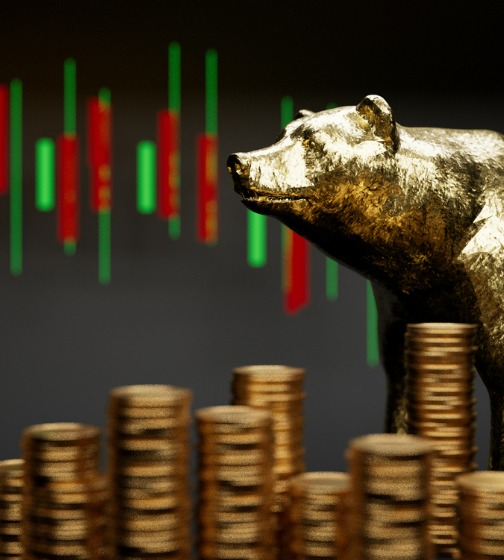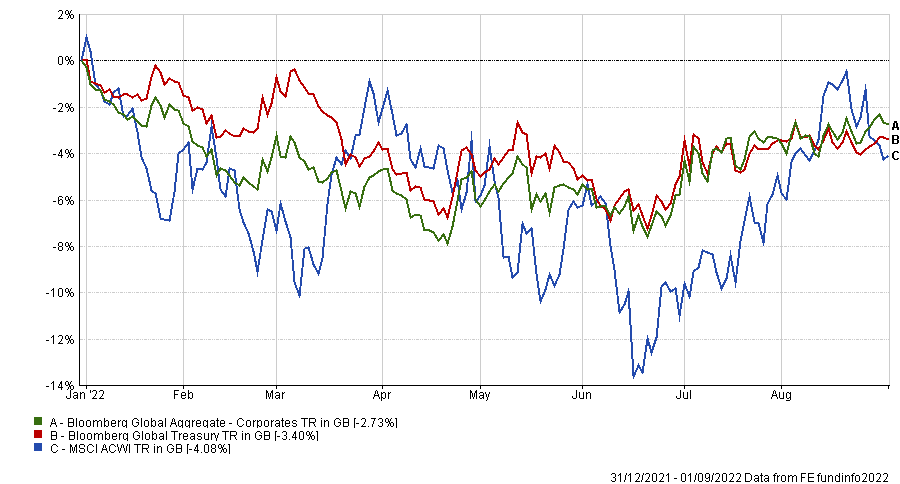The summer rally that has lifted the market is likely over, Pictet strategists believe, and investors should prepare themselves for “much less friendly” conditions from here. 
The opening half of 2022 was dominated by a broad-based sell-off as investors fretted about surging inflation, interest rate hikes, slowing growth and the war in Ukraine. Most parts of the market aside from commodities posted heavy losses over this time.
However, global equities staged a strong rebound from mid-June, although – as the chart below shows – this has lost steam in recent weeks.
Performance of global equities and bonds over 2022

Source: FE Analytics
Luca Paolini, chief strategist at Pictet Asset Management, noted that the summer rally started after falling oil prices added to hopes that the Federal Reserve would be able to curb inflation with a ‘soft landing’. In addition, positive economic data – such as strong job creation growth – highlighted the US’ resilience and boosted investor sentiment.
However, Paolini said: “Yet there are reasons to believe the stock market recovery has run its course. Oil prices are rising again. And even if inflation has peaked, it is looking sticky.
“Business and consumer surveys, meanwhile, are turning gloomy even though central banks are likely to ignore these until they feed through to hard economic data. At the same time, valuation and sentiment indicators no longer offer compelling cases to hold riskier assets.”
Pictet Asset Management currently has an underweight stance on equities and a neutral position on bonds, balanced by an overweight in cash.
“Equities might have enjoyed a summer respite, but autumn threatens more storm clouds,” Paolini said. “Tactically, we therefore believe it is prudent to further reduce exposure to some of the more cyclical areas of the equity market.”
Part of this is reducing exposure to Chinese equities, which he said “look somewhat vulnerable”.
This is because China’s latest consumption and investment data came out much weaker than expected, while there are signs that export growth is peaking. But a major concern is the fact “there is no end in sight to the problems engulfing the property market”, such as mortgage boycotts.
“Although Chinese equities look very cheap according to our valuation analysis, we believe the risks are too high – at least in the short term – and the policy reaction has so far been insufficient to offset the underlying economic weakness. We therefore reduce China to neutral from overweight,” Paolini added.
Pictet’s monthly asset allocation grid - September 2022

Source: Pictet Asset Management
Pictet remains cautious on the US, arguing that it is by far the most expensive equity market and likely to suffer a deterioration in corporate earnings.
The group’s analysis suggests that US real GDP growth needs be twice as high as economists currently forecast (2.4% versus 1.2%) or US 10-year TIPS yield have to fall to 0% (or a combination of both) in order for US equities to generate positive returns over the next 12 months.
It is also cautious on European stocks, noting that the region sits on the brink of a recession because of the ongoing energy crisis and its reliance on Russian gas.
There are some stock markets that the asset management house is positive on. Paolini explained: “We see some opportunities in UK equities, thanks to the market’s defensive characteristics and exposure to the energy sector. Furthermore, a weak sterling should boost the value of international earnings.”
The group also likes Japanese stocks, which it expects to be the fastest growing major developed economy for next year. Japan is benefitting from a post-Covid pick-up in consumer demand, benign inflation dynamics and better energy security with policy support to restart nuclear plants.
However, to turn more positive on riskier assets, Pictet would need several factors to come into play – at more or less the same time.
“First, a steeper yield curve. That would suggest strong economic growth down the line; it is also a prerequisite for bull markets. Second, a bottoming of downward revisions to corporate earnings forecasts and to leading economic indicators,” Paolini explained.
“Third, technical indicators giving unequivocal ‘oversold’ signals for equities, and cyclical stocks in particular. And finally – for bonds – that the currency monetary tightening cycle is sufficient to get inflation back to central banks’ targets.”






